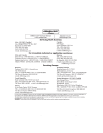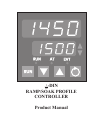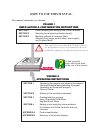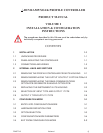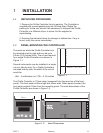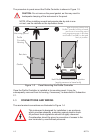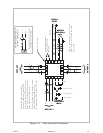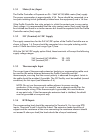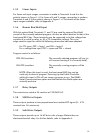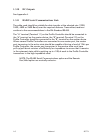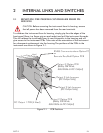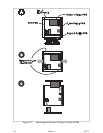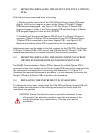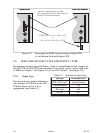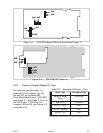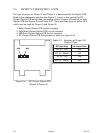1.3.5 Linear Inputs
For linear mA input ranges, connection is made to Terminals 4 and 6 in the
polarity shown in Figure 1-4. For linear mV and V ranges, connection is made to
Terminals 4 and 5 in the polarity shown in Figure 1-4. For details of the linear
input ranges available, refer to Appendix A.
1.3.6 Remote Run/Hold Input
With this option fitted, Terminals 11 and 12 are used for external Run/Hold
control of the currently-selected program; this has an effect identical to that of the
front panel RUN key. These terminals may be connected to (a) the voltage-free
contacts of a switch or relay, or (b) a TTL-compatible voltage. This is an
edge-sensitive input for which the following convention has been adopted:
For TTL input, OFF = logic 1 and ON = logic 0
For a voltage-free input, OFF = open and ON = closed
Program control is as follows:
OFF-ON transition: The currently-selected program will run (or
will resume running if it is currently held).
ON-OFF transition: The currently-running program will be
held.
NOTE: When this input is used, the front panel RUN key can be
used only to abort a program. Powering-up the Profile Controller
whilst this input is ON will not cause a program to run. The RS485
Serial Communications option and the Remote Run/Hold option are
mutually exclusive.
1.3.7 Relay Outputs
The contacts are rated at 2A resistive at 120/240V AC.
1.3.8 SSR Drive Outputs
These outputs produce a time-proportioned non-isolated DC signal (0 - 4.2V
nominal into 1k
W minimum).
1.3.9 Solid State Outputs
These outputs provide up to 1A AC drive with a longer lifetime than an
electromechanical relay. For further details, refer to Appendix A.
S077-1 Volume I 1-5



